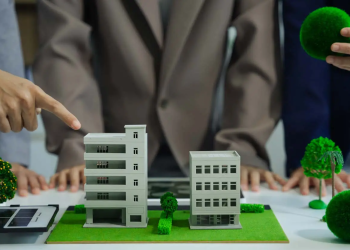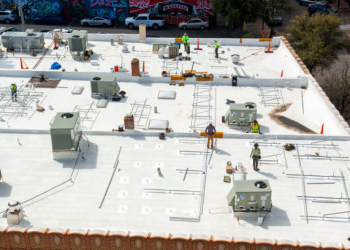Table of Contents

Traditional soil garden tactics take up about 5 hours a week in chores associated with maintenance. This includes weeding, fertilizing, and removing pests.
Hydroponic gardening may require a bit more to get started. Still, it offers a more maintenance-friendly approach to DIY gardening once established. You can create a simple hydroponic garden with PVC piping for a space-saving hassle-free garden experience.
Hydroponics Can Grow Food Anywhere
Traditional garden plots require space and soil at a minimum. To grow, a plant draws water and nutrients from the ground. Hydroponic gardens, on the other hand, can be grown anywhere and provide nutrients directly to the plant without a go-between.
Hydroponics deliver nutrient-fortified water directly to roots without soil, eliminating the need for large plots of land. There are a few ways to accomplish building a hydroponic garden system, including:
- Nutrient Film Technique (NFT): An NFT system supplies a constant stream of flowing water to a plant suspended above a tray. The water stream is recycled and recirculated at the plant’s roots allowing for adequate airflow to reach the top of the root system.
- An Ebb and Flow System: This system should be called dry and flood. Plants are suspended in a container inside a water reservoir. Water is circulated on a timer that floods the plant and then allows for drying time, whereby root growth is encouraged.
- Wicking System: The simplest form of hydroponic gardening is the wicking system. A plant receives a steady supply of nutrient water from a reservoir below a wick.
Hydroponics allows you to yield food all year long. Each of these hydroponic systems can be quickly built using PVC. They can be built with limited space, making them the perfect choice for urban DIY gardening.
Hydroponics Conserve Water and Reduce Pesticides
You might be tempted to think that a continuous water supply would strain water resources. That’s not the case, though. The NFT and Ebb and Flow hydroponics systems operate by recycling the same water.
Studies have found that hydroponics is ten times more water conscious than soil-based growing methods. Comparatively to soil-based growing, hydroponics are:
- Space Efficient
- Less Labor Intensive
- Able to Control the Growing Environment
- Quicker to Produce Results
An attractive quality of hydroponic gardening is how low effort it can be. Seasonal pests use soil’s safety to hide from weather elements such as winter. As conditions warm up, insects emerge from hiding and feast on your garden produce.
Eliminating soil as a growing medium also helps eliminate crop-eating pests and the need for pesticides. Furthermore, no soil means no weeds to pull.
DIY Hydroponic Garden
If you’re convinced that hydroponics is the future of growing, you could start your DIY hydroponic garden using PVC and a few steps. Before you begin the project, you’ll want to collect your material. Make sure you have:
- 4-6 Large PVC Pipes (Schedule 40 white pipe is all you need)
- Elbow Connectors (amount depends on grid choice)
- One PVC End Cap
- Reservoir Container
- Hydroponic Pump
- Growing Container
- Hosing
Step 1: After you’ve collected your materials, decide on and arrange your growing grid. The crucial aspect is ensuring water can easily flow from top to bottom. Simple arrangements work, and you don’t need to get fancy. A vertical setup will eliminate the need for framing.
Step 2: Once you’ve established your grid, you’ll need to cut the pipe using rotating pipe cutters. Use a drill with a hole bit to make holes at the top of the PVC pipe to house your growing containers. The hole size will depend on your containers’ size, but they should sit in the hole without falling through.
Step 3: Now, it’s time to assemble your hydroponic growing grid. Use a PVC end cap on the top pipe and an elbow connector on the other. Connect your pipes in this arrangement until you get to the base of your setup. Your base pipe will need another elbow fitting to allow water to flow back into the reservoir.
Step 4: After you’ve dry-fit your setup to ensure it allows adequate water flow, you can use cement and primer to adhere all of the pieces together. If you’ve chosen a vertical hanging system, you can attach it to a simple wood or PVC pipe frame. Allow your piping to dry overnight.
Step 5: You’re almost ready to grow. Set up your pump inside the reservoir and connect hose tubes from the pump to the top PVC pipe where the first cup will be placed. Place your cups, fill the reservoir, start the pump, and start growing!
Final Thoughts
Hydroponic can relax the gardening hobby by eliminating some of the chores associated with soil growing. The beauty of hydroponic garden setups is that they can fit anywhere. As you cut and assemble, your measurements will depend on your DIY garden space size. You can always check out PVCFittingsOnline.com to find the needed materials.
Author Bio:
Mark Ligon is the Marketing Manager at PVC Fittings Online, a leading supplier of consumer based PVC products; including piping, fittings, valves, plumbing supplies and accessories. Mark is a DIYer and provides advice to individuals on DIY projects utilizing a range of PVC type products.







